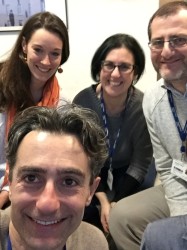BibTex format
@article{Floriddia:2011:10.3791/2803,
author = {Floriddia, E and Nguyen, T and Di, Giovanni S},
doi = {10.3791/2803},
journal = {J Vis Exp},
title = {Chromatin immunoprecipitation from dorsal root ganglia tissue following axonal injury.},
url = {http://dx.doi.org/10.3791/2803},
year = {2011}
}

